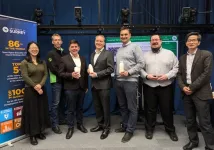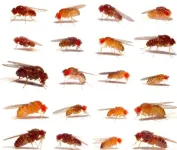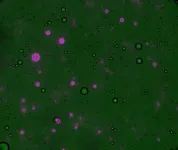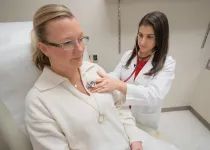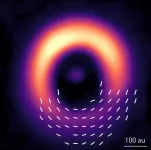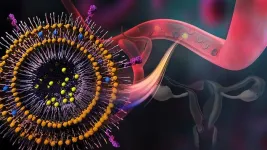(Press-News.org) A multimillion-pound research project, called SustaPack, aims to overcome manufacturing challenges for the next generation of sustainable, paper-based packaging for liquids. Backed by a £1 million grant from the Engineering and Physical Sciences Research Council (EPSRC) as part of UKRI’s co-investing programme, packaging technology company Pulpex Ltd has joined forces with the University of Surrey to refine its manufacturing processes to provide a viable solution to plastic pollution.
Contributing matching support towards the project, Pulpex has already made significant strides in the development of its patented technology, which produces degradable bottles made from natural wood fibres. The packaging offers a sustainable alternative to traditional plastic materials and can be recycled in existing paper waste-streams.
However, designing the next generation of production technology and materials requires novel and fundamental research to address current limitations, including new analytical techniques to improve product quality, optimising performance and reducing in-process imperfections.
Scott Winston, CEO at Pulpex, said:
"We’re excited to strengthen our existing collaboration with the University of Surrey to enhance our technologies and processes. Our SustaPack partnership will help us advance safe, sustainable packaging solutions, enabling brand owners to meet Net-Zero targets. It gives consumers sustainable choices, delivers answers for brand owners and enables supply chains and retailers to deliver their carbon footprint reduction goals – a priority for all."
A key feature of the packaging is its multi-layered barrier coating, which prevents contained liquid from leaking, as well as inward oxygen permeation, maintaining high quality products for consumers. To create a step-change in the energy usage in methods used to apply these coatings, the researchers plan to develop innovative processes that consume less energy and water while increasing the shelf life of packaged goods.
Professor Joseph Keddie, from the University of Surrey’s School of Mathematics and Physics, and Fellow of the Institute for Sustainability, said:
"Over the past couple of years, I have forged a close relationship with Pulpex as a Royal Society Industry Fellow, and I am enthusiastic about strengthening our ties through our SustaPack Partnership.
“Our aim here is to combine novel coating processes, mechanistic modelling, computer vision and artificial intelligence (AI) to establish a 'dry' spray coating process that deposits food-safe, degradable coatings. This technology, which isn’t yet commercially available, will not only drive the next generation of packaging technology but will also contribute to a significant reduction in plastic pollution and lower carbon emissions from manufacturing."
A multi-disciplinary team of researchers will explore the feasibility of using thermal imaging to detect defects in wet coatings as they occur, enabling immediate corrections using AI. Multi-scale mechanistic models of the coating process will be employed to identify the sources of imperfections and non-uniformities and then eliminate them to ensure optimal packaging performance.
By applying innovative computer vision techniques powered by AI, the project aims to identify production defects in real-time, optimise materials and processes, and achieve 100% reliability in the manufactured products.
The outcomes of the project could set new standards for environmentally friendly packaging, helping brand owners reduce their environmental impact amidst ever-increasing environmental regulations – while offering consumers eco-friendly options to help fight against plastic pollution.
[ENDS]
Notes to editors
Professor Joseph Keddie is available for interview; please contact mediarelations@surrey.ac.uk to arrange.
To find out more, visit www.pulpex.com
END
Multimillion-pound research project aims to advance production of next-generation sustainable packaging
2025-02-06
ELSE PRESS RELEASES FROM THIS DATE:
‘Marine Prosperity Areas’ represent a new hope inconservation
2025-02-06
Could 2025 be the year marine protection efforts get a “glow up”? According to a team of conservation-minded researchers, including Octavio Aburto of UC San Diego’s Scripps Institution of Oceanography, the moment has arrived.
In a new study published Feb. 6 in the journal Frontiers in Marine Science, Aburto and a multinational team of marine scientists and economists unveil a comprehensive framework for Marine Prosperity Areas, or MPpAs. With a focus on prosperity—the condition ...
Warning signs may not be effective to deter cannabis use in pregnancy: Study
2025-02-06
PISCATAWAY, NJ – Warning signs at dispensaries about the potential health effects of cannabis use in pregnancy may not be effective, according to a new report in the Journal of Studies on Alcohol and Drugs, based at Rutgers University. In fact, those who are pregnant and using cannabis may actually distrust the content of warning signs altogether.
“Mandatory warning signs aren’t working,” says lead researcher Sarah C. M. Roberts, DrPH, of the University of California, San Francisco. In fact, some of the respondents “saw the signs as having stigmatizing or negative effects on pregnant people who use ...
Efforts to find alien life could be boosted by simple test that gets microbes moving
2025-02-06
Finding life in outer space is one of the great endeavors of humankind. One approach is to find motile microorganisms that can move independently, an ability that is a solid hint for life. If movement is induced by a chemical and an organism moves in response, it is known as chemotaxis.
Now, researchers in Germany have developed a new and simplified method for inducing chemotactic motility in some of Earth’s smallest life forms. They published their results in Frontiers in Astronomy and Space Sciences.
“We tested three types of microbes – two bacteria and one type of archaea – and found that they all moved toward a chemical called L-serine,” ...
Study shows some species are susceptible to broad range of viruses
2025-02-06
A study of fruit flies shows some species are highly susceptible to a wide range of viruses.
In the study – by the University of Exeter – 35 fruit fly species were exposed to 11 different viruses of diverse types.
As expected, fly species that were less affected by a certain virus also tended to respond well to related viruses.
But the findings also show “positive correlations in susceptibility” to viruses in general. In other words, fly species that were resistant to one virus were generally resistant to others – including very different ...
How life's building blocks took shape on early Earth: the limits of membraneless polyester protocell formation
2025-02-06
One leading theory on the origins of life on Earth proposes that simple chemical molecules gradually became more complex, ultimately forming protocells—primitive, non-living structures that were precursors of modern cells. A promising candidate for protocells is polyester microdroplets, which form through the simple polymerisation of alpha-hydroxy acids (αHAs), compounds believed to have accumulated on early Earth possibly formed by lightning strikes or delivered via meteorites, into protocells, followed by simple rehydration ...
Survey: Many Americans don’t know long-term risks of heart disease with pregnancy
2025-02-06
COLUMBUS, Ohio – Pregnancy-related deaths in the U.S. have risen 140% over the past three decades with heart disease a major cause, according to the American Heart Association. A new national survey commissioned by The Ohio State University Wexner Medical Center found that many Americans are not aware of the long-term risks of heart disease with pregnancy and the critical care needed before, during and after pregnancy.
“During pregnancy there are a lot of different hormone shifts that happen to accommodate growth of the baby and health of the mom. The result is that the mom’s heart rate increases along with the amount ...
Dusting for stars’ magnetic fingerprints
2025-02-06
For the first time astronomers have succeeded in observing the magnetic field around a young star where planets are thought to be forming. The team was able to use dust to measure the three-dimensional structure “fingerprint” of the magnetic field. This will help improve our understanding of planet formation.
Planets form in turbulent disks of gas and dust called protoplanetary disks around young stars. It is thought that the first step in planet formation is dust grains colliding and sticking together. The movement of ...
Relief could be on the way for UTI sufferers dealing with debilitating pain
2025-02-06
Relief could be on the way for UTI sufferers dealing with debilitating pain
New insights into what causes the painful and disruptive symptoms of urinary tract infections (UTIs) could offer hope for improved treatment.
UTIs are one of the most prevalent bacterial infections globally, with more than 400 million cases reported every year. Nearly one in three women will experience UTIs before the age of 24, and many elderly people and those with bladder issues from spinal cord injuries can experience multiple UTI’s in a single year.
Findings from a new study led by Flinders University’s ...
Testing AI with AI: Ensuring effective AI implementation in clinical practice
2025-02-06
Using a pioneering artificial intelligence platform, Flinders University researchers have assessed whether a cardiac AI tool recently trialled in South Australian hospitals actually has the potential to assist doctors and nurses to rapidly diagnose heart issues in emergency departments.
“AI is becoming more common in healthcare, but it doesn’t always fit in smoothly with the vital work of our doctors and nurses,” says Flinders University’s Dr Maria Alejandra Pinero de Plaza, who led the research.
“We need to confirm these systems are trustworthy and work ...
Researchers find improved method for treating rare, aggressive, pregnancy-related cancer
2025-02-06
PORTLAND, Ore. – A new drug delivery system shows promise for treating a rare, aggressive form of cancer affecting pregnant women and new mothers, and it has potential with other cancers as well.
Scientists led by Olena Taratula, a nanomedicine researcher at Oregon State University, have found a way to better ensure the drug used to combat the disease reaches tumor cells without damaging healthy tissue.
Findings of the study into choriocarcinoma, which occurs in the United States at a rate of about four cases per 100,000 pregnancies, ...
